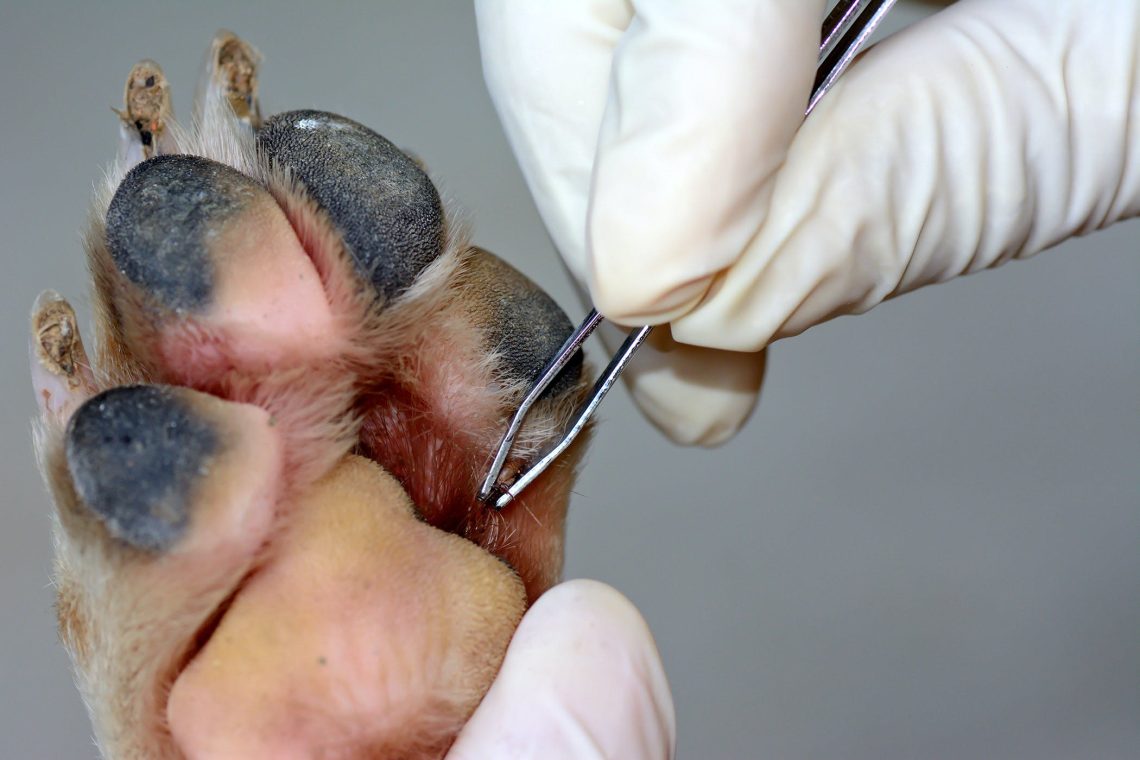
Piroplasmosis in dogs: symptoms and treatment
Pyroplasmosis is an extremely dangerous canine disease caused by tick bites. The greatest probability of catching it exists from the first days of spring to the last days of autumn, but there are cases of infection in the cold season. The maximum activity of ticks and cases of infection are observed in late spring and early autumn.
Contents:
1. What is the causative agent
2. Incubation period and spread of the disease
3. Changes in the body
4. Symptoms of piroplasmosis
5. Diagnosis and treatment
6. Prevention
Piroplasmosis does not bypass either young or adult individuals, but young pets and purebred dogs are most susceptible to it. Older animals cope with the disease more easily, but its course can be complicated by other diseases that occur in adult dogs. There are two forms of the disease – acute and chronic. A sick dog is not contagious to the owner.
Contents
What is the causative agent
The causative agent of the disease is the blood parasite Babesia, carried by ixodid ticks, which can be found in the forest, in the park, in the field, and even among the vegetation in the city. Any place where grass grows is potentially dangerous, because ticks live there. During the life cycle, the parasite has two owners – the main and intermediate. In the body of the first, sexual reproduction takes place, in the body of the second – asexual. Intermediate hosts can be both domestic animals and wild individuals of the canine family.
Incubation period and spread of the disease
The incubation period lasts from one to three weeks, and before starting treatment, you must wait for the first symptoms of the disease. They usually appear within a few days or towards the end of the third week after infection.
The duration of the incubation period is due to various factors: the age of the dog, the state of the body, the duration of contact with the tick. When vaccinated or in the case of a previous illness, the dog develops immunity, which makes it easier to get sick with piroplasmosis.
Changes in the body
Getting into the dog’s blood, parasites begin active reproduction and destroy red blood cells. Because of this, a large amount of hemoglobin is released, which the liver and kidneys can no longer handle. It breaks down in the blood vessels, creating toxic products that poison the blood. This provokes blockage of blood vessels, malfunctions of the cardiovascular system, and anemia develops. If the pet is not provided with timely medical care, he will die. When the first symptoms appear, be sure to show the animal to a veterinarian. Home treatment of this disease is impossible.
Symptoms of piroplasmosis
Symptoms of acute piroplasmosis:
- decreased appetite;
- discoloration of mucous membranes and urine;
- rapid breathing;
- apathy;
- temperature increase;
- decreased response to external stimuli;
- itching in the affected area of the body;
- vomiting;
- diarrhea.
The chronic form appears in dogs that have previously had such a disease. Symptoms are less pronounced than in the acute form. As a rule, this is:
- poor appetite;
- decreased activity and lethargy;
- diarrhea;
- elevated temperature.
Diagnosis and treatment
The appearance of the first symptoms is a reason for an immediate visit to the veterinarian. Only he, on the basis of symptoms and laboratory results, can make an accurate diagnosis and prescribe treatment. If you managed to get a tick out of the dog’s body, you need to examine it as well.
If the disease is still detected, the treatment of piroplasmosis should be started immediately. At the initial stage, antiparasitic agents can help the pet. Further treatment will be aimed at combating the decay products of erythrocytes and waste products of ticks.
It is very important to increase the immunity of the dog so that it successfully copes with the disease. A veterinarian can prescribe vitamin complexes, drugs for the heart, hepatoprotectors. Forced diuresis can be used to eliminate the affected red blood cells, and plasmapheresis can be used to cleanse the blood.
If you start treatment at a very early stage, the dog can recover in just a couple of days. In advanced cases, treatment can take up to one month. And no one, not even a doctor, can guarantee a full recovery.
Prevention
The most effective measure for the prevention of piroplasmosis is the refusal to walk in places of mass accumulation of ticks. But since sometimes this is impossible, you can resort to protective equipment: these are special collars, drops from ticks, and vaccination of the animal. It is necessary to conduct a thorough examination of the pet after each walk. The use of several tools at once further reduces the likelihood of infection.
It is necessary to closely monitor the behavior of the dog, noticing everything, even the smallest changes. Timely assistance will increase the pet’s chances for a full recovery.
See also:
- The most common dog diseases: symptoms and treatment
- Most common skin conditions in dogs
- Why is my dog itching?
- How to protect your dog from tick bites
- Tick Removal and Prevention of Tick Infestation in Dogs





